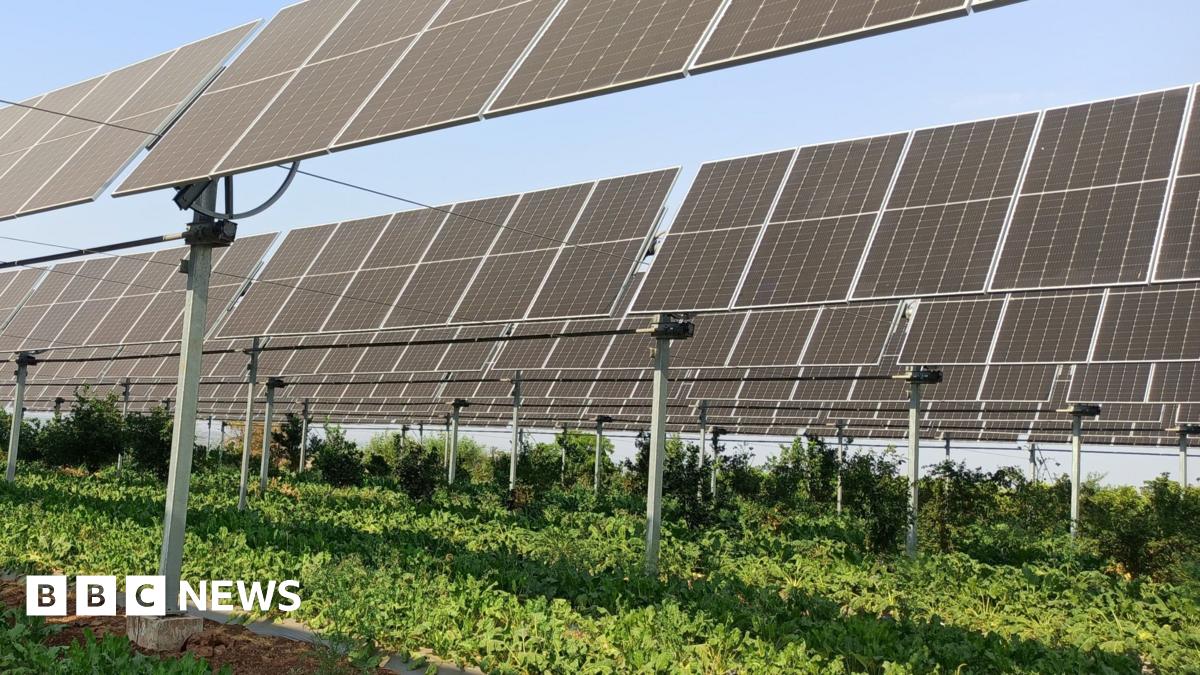Siting solar panels above crops goes by the term agrivoltaics.
India would seem particularly suited to such innovation. The fortunes of many of its farmers often hinge on an unpredictable monsoon, so a reliable income from a solar energy firm might provide some welcome financial security.
But despite the benefits, take up has been slow, around 40 projects are operating in India at the moment, according to the National Solar Energy Federation of India (NSEFI), which represents India’s solar power industry.
There are several challenges.
Not all crops will grow under solar panels. Depending on the layout, the panels reduce the light getting through by between 15% and 30%. Some denser layouts will block too much sun for staple crops including wheat, rice, soybeans or pulses.
“What works well are high-value crops with moderate or low-light needs, like green leafy vegetables, spices such as turmeric and ginger, and some flowers,” says Vivek Saraf, the founder and CEO of Delhi-based SunSeed, which specialises in agrivoltaics.
There’s also the issue of expense.
To allow farming underneath, the solar panels need to be at least 11ft (3.5m) off the ground. That makes them between 20% and 30% more expensive to install than panels on a regular solar farm, where they are much closer to the ground.
“Small farmers cannot own these systems. They don’t have the risk appetite or capital,” says Mr Saraf.
